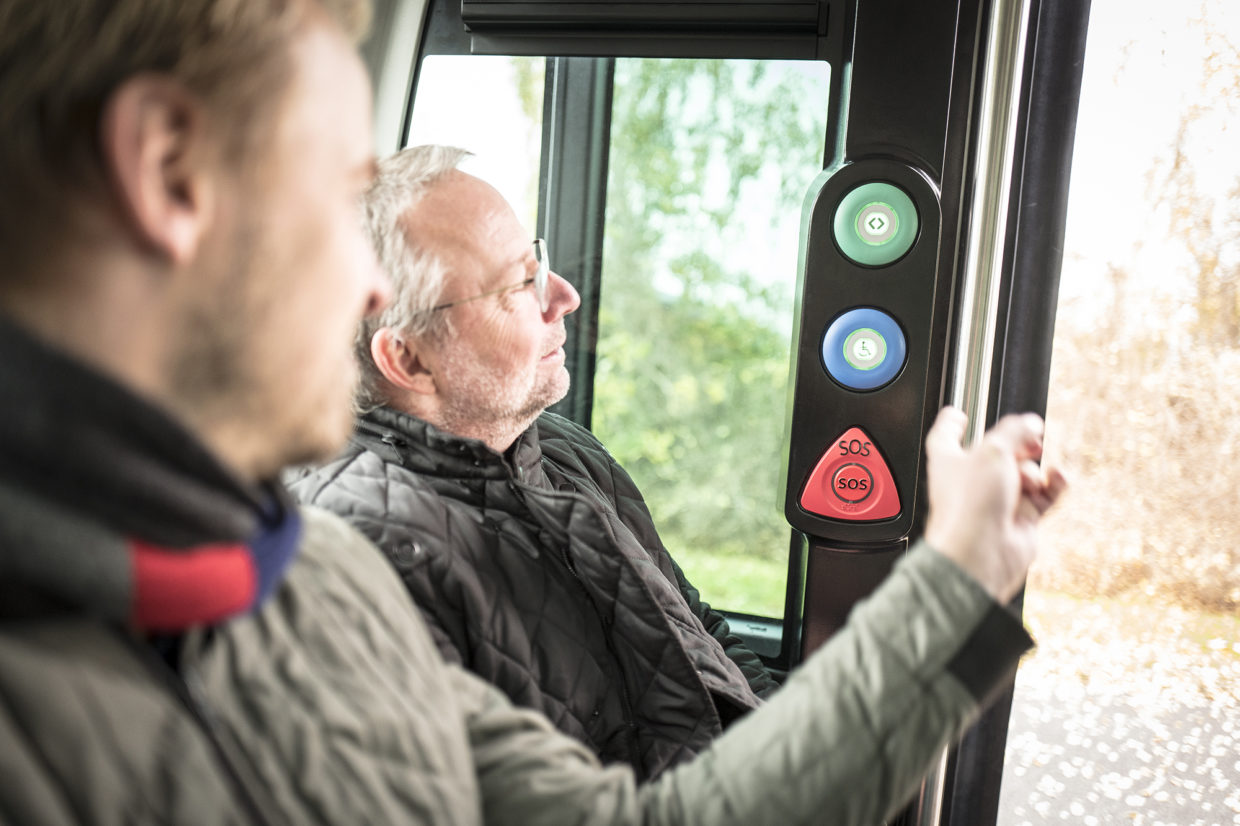
New project will test autonomous shuttles in Greater Copenhagen
Scroll ned for at læse mere

Scroll ned for at læse mere
In the future, passengers will be able to travel from the new light rail stations directly to the door of their workplace or home thanks to self-driving shuttles. Self-driving shuttles can operate at higher frequencies, are more flexible in terms of route planning and are able to travel on routes that manned buses cannot reach.
In a new project, autonomous shuttles are set to be tested in two selected areas – first at DTU Campus in Lyngby and then in Albertslund. The test areas are located in one of Denmark’s largest urban development areas, LOOP CITY, which covers the ten municipalities where the capital’s 28 kilometres of light rail are being installed. Friday marked the start of the new project with an autonomous shuttle taking its first test trip with in the industrial park.
Nobina, the largest bus operator in the Nordic region, is responsible for the operation of the autonomous shuttles. Director Niels Peter Nielsen says of the project:
“With the new self-driving transport modes, we have a unique opportunity to supplement the public transport that is currently running on fixed routes and infrastructures. Self-driving shuttles are a more dynamic supplement to existing transport modes and can strengthen public transport. It will provide a more refined network of public transport that gives passengers greater flexibility and can bring them closer to their destination. ”
In addition to Nobina, the other project participants are LOOP CITY, the partner organization Gate 21, Albertslund Municipality, Gladsaxe Municipality, IBM, Roskilde University (RUC) and the Technical University of Denmark (DTU). The project is supported by EU programme, Urban Innovative Actions.
LOOP CITY is a cooperation between 10 municipalities, regions and the state, working on city and business development along Ring 3, where light rail is being built from Ishøj to Lyngby from 2018 to 2023/24. With the new light rail comes major transformation for the suburbs along its route. The new project will investigate how the city’s physical and digital infrastructure can be organized in order to get ready for the self-driving shuttles.
Autonomous shuttles will be an important part of creating better connections at stations like the ones along the new light rail route.
The mayor of Albertslund Municipality, Steen Christiansen, sees the light rail and the testing of the autonomous shuttles as another opportunity to boost the extensive development of the municipality’s industrial park, which also has a stop on the new light rail.
“Hersted Industrial Park is in a comprehensive development. With future-proof public transport we can draw more companies and citizens into what will become a whole new urban area in Albertslund,” says Steen Christiansen, and continues:
“The light rail and the self-driving shuttles will help ensure that we also have smart, green and flexible ways to transport us collectively in the future. The upcoming light rail is a decisive step, but the self-driving shuttles will be able to create better connections when the light rail arrives, ensuring that even more people will be able to use green public transport.”
IBM and DTU are responsible for the computer engineering work needed to operate the autonomous shuttles intelligent. Among other things, this is about how more dynamic routes can be planned and optimised, as well as developing applications for trip planning.
Claus Klint, director of Internet of Things at IBM, sees great potential in the self-driving public transport.
“The technology in and around the self-driving buses offers enormous opportunities to make passenger transport faster, safer and more convenient. We work with a wide range of solutions, such as artificial intelligence, which allows passengers to enjoy a unique customer experience,” explains Claus Klint.
Nobina already has experience testing autonomous shuttles in Stockholm and Helsingborg in Sweden.
The partners behind the new project expect the test runs to begin in the second half of 2018.
The project will strengthen the future offering of public buses for citizens. The project will introduce autonomous shuttles in selected areas in the urban development area LOOP CITY, where the new light rail from Ishøj to Lyngby is being installed from 2018 to 2023/24.
The partners behind the project are the urban development area LOOP CITY, partner organization Gate 21, Albertslund Municipality, Gladsaxe Municipality, bus operator Nobina Technology, IBM, Roskilde University (RUC) and the Technical University of Denmark (DTU).
The budget is 31.4 million DKK and the project is funded by partners and the EU program Urban Innovative Actions.
The project’s follow-up group consists of Movia, the Capital Region of Denmark, the Metro company and the Greater Copenhagen Light Rail. The remaining LOOP CITY municipalities are invited to join the follow-up group.
From 1 July 2017, a change in the Road Traffic Act has made it permissible to apply for controlled trials with self-driving vehicles. The amendment makes it possible to test autonomous vehicles on public roads in Denmark when it is done with regard to road safety.